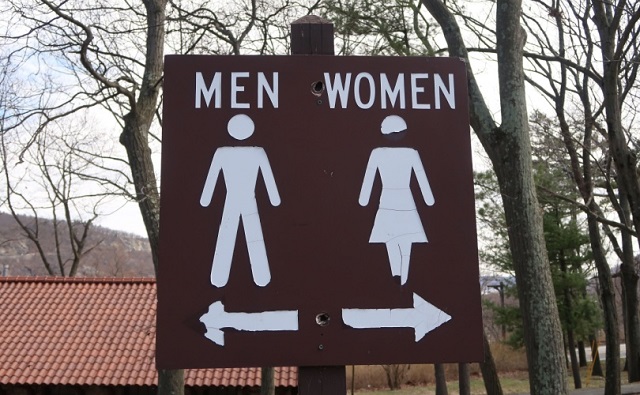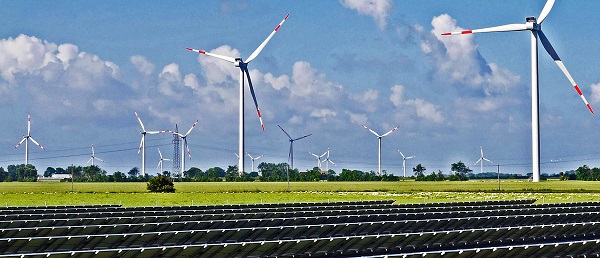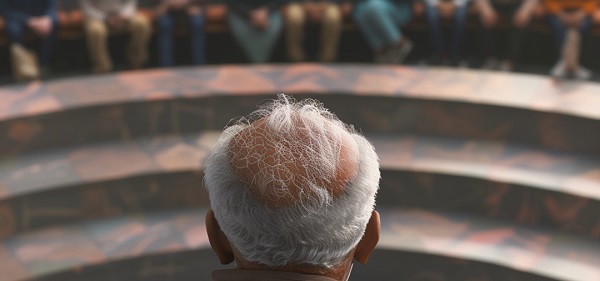Opinion
Quebec’s ban on gender-neutral bathrooms in schools is good news

From LifeSiteNews
When one school in Alberta decided to bring in gender-neutral bathrooms back in 2017, many students avoided them because, as any idiot knows, boys and girls generally feel uncomfortable doing their business in a stall next to a member of the opposite sex.
It is still sometimes surreal to consider what constitutes a news story in 2024. Imagine telling your grandparents, or even your parents 20 years ago, that it would be breaking news across the board — Global News, the Globe and Mail, the national broadcaster — that a provincial government had issued a directive … that bathrooms and locker rooms in schools be specifically designated for either boys or girls.
But yet here we are. On May 1, Quebec’s new rules banning the implementation of shared, “gender-neutral” or “all-gender” bathrooms came into effect, the result of a 2023 petition to protest the plan to make all bathrooms gender neutral at D’Iberville high school in Rouyn-Noranda. At the time, Premier François Legault commissioned Family Minister Suzanne Roy with creating an advisory committee to do research; recommendations are expected in the winter of 2025.
But Education Minister Bernard Drainville, perhaps realizing how ridiculous it is that an advisory committee needs to be created — and then needs a year — to determine whether or not teenage boys and girls need their own bathrooms, decided to go ahead and “correct the course,” citing the need protect young girls from discomfort and harassment. When the news broke that a Quebec high school in Rouyn-Noranda was starting work on gender-neutral bathrooms, Drainville decided to address the issue via directive.
The very existence of such a sane, common-sense directive reveals how insane our culture has become; mandating male and female bathrooms is not the sort of thing one used to have to do, explicitly. The directive also stipulates that any student wishing to use an individual bathroom must be able to do so. The directive, Drainville says, is needed. “It’s a question of well-being, privacy, and respect for private life,” he said.
The CBC, of course, promptly hunted down some LGBT activists who predictably oppose the policy. “(The directive) is not well balanced because it stigmatizes kids that are a bit different,” said Mona Greenbaum, co-director of LGBT+ Family Coalition. “We know that from all sorts of research that it’s very harmful for young people to not have their gender identity affirmed.” The most recent research, of course, is the UK National Health Service’s Cass Review, which in fact concluded that the so-called “affirmative model” is “very harmful for young people.”
Jennifer Maccarone, a frequently hysterical LGBT activist and Member of the National Assembly, serves as the Liberal Party critic for “the 2SLGBTQIA+ community,” also weighed in, stating that the directive contradicted a 2021 guide for schools published by the Ministry of Education that supported the idea of gender-neutral spaces. “Does the government still stand by their document?” Maccarone demanded to know during a news conference. Drainville’s directive is pretty clear, so it would seem the answer to her question is “no.”
It is because of folks like Maccarone that such directives are even needed in the first place. When one school in Alberta decided to bring in gender-neutral bathrooms back in 2017, many students avoided them because, as any idiot knows, boys and girls generally feel uncomfortable doing their business in a stall next to a member of the opposite sex. Lineups began to form outside the gender-specific bathrooms, and students trekked all the way across the school to avoid using the gender-neutral bathrooms. Girls even risked dehydration and bladder infections rather than use bathrooms with males.
Of course, none of that matters to Maccarone and the LGBT activists. Their agenda is far more important than the comfort and safety of students — especially girls. Their complaints, and their stories, are never even considered. Fortunately, it appears that saner heads are finally prevailing.
Media
Reporters determined to drive their industry and its reputation into the abyss one Tweet at a time

Last week, my column for The Hub was about why journalists, for the sake of journalism, should avoid posting on Twitter/X.
It took mere hours for my advice to be wrapped up in a ball and shoved right back at me when Robert Fife, a reporter of many years experience (he’s even older than I am) and the Globe and Mail’s Ottawa bureau chief, posted in response to the House of Commons’ vote on a Conservative motion to approve pipelines that:
“Conservatives persist with cute legislative tricks, while the government tries to run a country.”
The Rewrite is a reader-supported publication.
To receive new posts and support my work, consider becoming a free or paid subscriber.
While he’s free to do so and obviously views things differently, it is quite beyond me why the bureau chief of a distinguished journalism organization would expose himself so casually to accusations of bearing a bias – particularly given public concern about government funding of media – and so I responded by sharing Fife’s post with the comment:
“I’m old-fashioned enough to think reporters shouldn’t be blatantly stating biases. Not a great way to retain public trust.”
Now, I was aware that Fife was sharing a headlined opinion column by a colleague, Robyn Urback. But Urback is perfectly capable of promoting her own work and if Fife’s sole motivation was to neutrally share her column, it would’ve been fine if he had posted something like: “Here’s one perspective on yesterday’s House of Commons vote.”
Some people suggested the post was OK because it was only sharing someone else’s viewpoint and a headline. But Fife’s appearance on CBCNN’s Power and Politics – in which he enthusiastically described the Opposition as “childish” and criticized it for criticizing the government – made it appear the Tweet was otherwise motivated. Not everyone in today’s newsrooms shares my view that reporters should do everything in their power to be viewed as objective. Fair enough. While the aspiration remains popular with the public, it is no longer favoured by many, maybe even most, modern journalists.
Fife’s been a good reporter for decades going back to long before Twitter. He’s been announced as the 2026 recipient of the Public Policy Forum’s Hy Solomon award for excellence in public policy journalism. There are also some exceptionally good reporters at the Globe and Mail such as Grant Robertson, who has won nine National Newspaper Awards – more than anyone, ever, and eight more than me. There is no evidence I can find that Robertson, like a lot of other very good journalists, even has an account on X/Twitter. I have absolutely no idea or suspicions concerning what he thinks about anything going on in the world and I think that is how journalists should aspire to be perceived. But when social media posts by other reporters bring into question journalists’ reputations as fair brokers of the events of the day, his prudent behaviour isn’t enough to keep the entire craft from suffering reputational damage. As the old saying goes, newspapers don’t report when airplanes land safely – a phrase that applies equally to reporters, of which, according to the latest Global Media and Internet Concentration Project report, there were 1,600 fewer in Canada last year.
All that said, I don’t think anyone cares enough to do anything about it. Despite considerable evidence detailing journalism’s decline as a trusted institution, the overwhelming majority of its practitioners appear to me to have no intention whatsoever of altering course.
It looks like time has passed me by. As Leonard Cohen sang, “I’m old and the mirrors don’t lie.” So I will just continue to tilt at windmills for a little longer and then decide if there aren’t more rewarding things to do.
So Tweet away, journos, Tweet away. Tweet all the way into the abyss.
The colloquial nature of many newsrooms continues to fascinate, the latest example being treatment of Bill C-9, which expands the powers of Canada’s hate criminal speech legislation. Already problematic from a free speech perspective, the deal Justice Minister Sean Fraser struck with the Bloc Quebecois to ensure its passage has alarmed both the Canadian Conference of Catholic Bishops and the National Council of Canadian Muslims.
That’s because in exchange for the Bloc’s support, Fraser will amend C-9 so that it removes the exemption given to statements made based on sincerely held religious beliefs. The exemption states: “if, in good faith, the person expressed or attempted to establish by an argument an opinion on a religious subject or an opinion based on a belief in a religious text.”
But, just as our media refuse to acknowledge developments beyond our borders on trans issues and health care models, they remain rube-ishly reluctant to look at what happens when quoting from the Bible becomes a police matter. I wrote about it elsewhere and, given that I am planning a Christmas break, will re-post that piece next week. In the meantime it will be interesting to see if any Canadian media or commentators pick up on the case of Päivi Räsänen, a medical doctor and Member of the Finnish Parliament. She and Bishop Juhana Pohjola of the Evangelical Lutheran Mission Diocese of Finland, twice acquitted, are awaiting the outcome of their third trial on allegations of criminal hate for quoting passages of the Bible regarding a church Pride event. If found guilty, they will face up to two years in prison, the same as in Canada.
The bad news for journalists working within traditional media structures continues.
The Nieman Lab predictions for 2026 forecast that Artificial Intelligence will continue to grow as a source of information for the public.
The good news?
“Tech companies will face pressure in the year ahead to bolster the information ecosystem.”
The bad news?
“Tech companies will realize they don’t need journalism to give people the answers they need.”
The conclusion?
“The threats we (journalists) face are existential, but we can reframe them as opportunities.”
Postmedia columnist Brian Lilley is definitely playing journalism with his elbows up these days.
Last week, he challenged his colleagues in the industry to question the activist group Coastal First Nations on its funding by US interests.
“Here’s an open challenge to the Parliamentary Press Gallery who will be covering the CEO of Coastal First Nations appearing in Ottawa,” he posted on Twitter. “Ask them what rights and title they hold to any of the land in question.
“Ask them about American funding.”
Near as I could tell, he didn’t get any takers and the industry will continue to present the anti-pipeline group as organic. But, just in case, I checked and Lilley’s response was “Hahahahahahhaha!”
Earlier, he firmly put CBCNN Power and Politics host David Cochrane in his place with a Facebook post stating “I’ve never seen an anchor in any country, on any network, push left-wing Liberal talking points as hard as Cochrane.”
Whew! Brian won’t be popular at parties.
Finally, a bouquet to Peter Mazereeuw of The Hill Times for the literary flourish with which he described the anonymous sources so routinely used by press gallery journalists who pretend they aren’t authorized to speak.
Justice Minister Sean “Fraser is currently in a bit of hot water with the PMO, which sent forth some of its anonymous flying monkeys yesterday to tell the CBC that he had not gotten its approval for his deal with the Bloc Québécois ….”
Remember that term.
Happy Hannukah. May your candles burn bright.
Readers will notice a new DONATE button has been added. Please consider making use of it and help us save journalism from bad journalism.
(Peter Menzies is a commentator and consultant on media, Macdonald-Laurier Institute Senior Fellow, a past publisher of the Calgary Herald, a former vice chair of the CRTC and a National Newspaper Award winner.)
The Rewrite is a reader-supported publication.
To receive new posts and support my work, consider becoming a free or paid subscriber.
Crime
Hero bystander disarms shooter in Australian terror attack

Insane footage shows a bystander attacking and disarming one of the terrorists, who appears to have been armed with a long rifle, during today’s shooting attack on an event celebrating Hanukkah at Bondi Beach in Sydney, Australia. pic.twitter.com/mJceco22bJ
— OSINTdefender (@sentdefender) December 14, 2025
The chaos that struck Australia on Sunday night produced one moment of astonishing courage: a Sydney shopkeeper, armed with nothing but instinct and grit, charged a gunman at Bondi Beach and wrestled the rifle out of his hands as terrified families ran for cover. Authorities say the act likely prevented even more deaths in what officials have already called an antisemitic terror attack that left 12 people dead and dozens wounded during a Hanukkah celebration along the water.
The hero has been identified as 43-year-old fruit shop owner Ahmed Al Ahmed, a father of two who happened to be nearby when gunfire erupted at the beachfront event “Hanukkah by the Sea,” which had drawn more than 200 people. Footage captured the moment he marched toward the shooter, grabbed hold of the rifle, and overpowered him in a brief, violent struggle. As the gunman hit the pavement, Al Ahmed momentarily pointed the weapon back at him but didn’t fire, instead placing it against a tree before another attacker opened up from a bridge above. He was hit in the hand and shoulder and is now recovering after emergency surgery.
A relative told Australia’s Channel Seven that Al Ahmed had never handled a gun in his life. “He’s a hero — he’s 100 percent a hero,” the family member said. New South Wales Premier Chris Minns echoed the praise, calling the scene “unbelievable,” adding, “A man walked up to someone who had just fired on the community and single-handedly disarmed him. Many people are alive tonight because of his bravery.”
Police say two shooters stepped out of a vehicle along Campbell Parade around 6:40 p.m. and began firing toward the beach. One gunman was killed, the other is in custody in critical condition. Detectives are also investigating whether a third attacker was involved, and bomb units swept the area after reports that an explosive device may have been planted beneath a pedestrian bridge. The toll is staggering: 12 dead, including one shooter, and at least 29 wounded — among them children and two police officers.
Prime Minister Anthony Albanese condemned what he called “a targeted attack on Jewish Australians on the first day of Hanukkah,” saying, “What should have been a night of joy and peace has been shattered by this horrifying evil attack.” Emergency crews flooded the beach as hundreds of panicked people sprinted away from the gunfire. Video shows one attacker firing down toward the sand from the bridge behind Bondi Park before being shot himself in a final standoff captured by drone footage. Both gunmen appeared to be carrying ammunition belts, with witnesses estimating up to 50 rounds were fired.
Australian police have cordoned off properties linked to the suspects and continue to canvass Bondi for additional threats. What remains clear is that Sunday’s attack was met with extraordinary acts of self-sacrifice, none more dramatic than a shopkeeper from Sutherland who walked into gunfire to stop further slaughter.
-

 Crime1 day ago
Crime1 day agoTerror in Australia: 12 killed after gunmen open fire on Hanukkah celebration
-

 Crime1 day ago
Crime1 day agoHero bystander disarms shooter in Australian terror attack
-

 Business1 day ago
Business1 day agoInflation Reduction Act, Green New Deal Causing America’s Energy Crisis
-

 Daily Caller2 days ago
Daily Caller2 days ago‘There Will Be Very Serious Retaliation’: Two American Servicemen, Interpreter Killed In Syrian Attack
-

 Business2 days ago
Business2 days agoFuelled by federalism—America’s economically freest states come out on top
-

 Automotive2 days ago
Automotive2 days agoPoliticians should be honest about environmental pros and cons of electric vehicles
-

 Media1 day ago
Media1 day agoReporters determined to drive their industry and its reputation into the abyss one Tweet at a time
-

 International2 hours ago
International2 hours agoAt Least 15 Killed In Shooting Targeting Jewish Community At Australia’s Bondi Beach, Police Say





